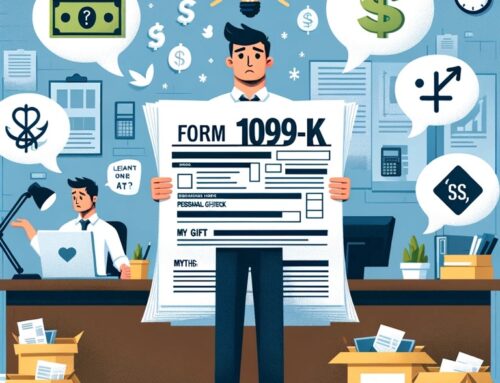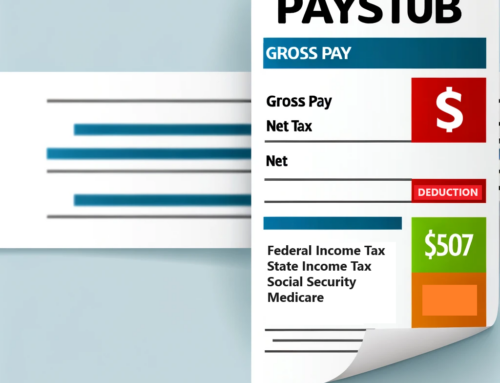Source: IRS.gov
WASHINGTON ― The Internal Revenue Service announced today that the nation’s tax season will begin Monday, Jan. 23, 2017 and reminded taxpayers claiming certain tax credits to expect a longer wait for refunds.
The IRS will begin accepting electronic tax returns that day, with more than 153 million individual tax returns expected to be filed in 2017. The IRS again expects more than four out of five tax returns will be prepared electronically using tax return preparation software.
Many software companies and tax professionals will be accepting tax returns before Jan. 23 and then will submit the returns when IRS systems open. The IRS will begin processing paper tax returns at the same time. There is no advantage to filing tax returns on paper in early January instead of waiting for the IRS to begin accepting e-filed returns.
The IRS reminds taxpayers that a new law requires the IRS to hold refunds claiming the Earned Income Tax Credit (EITC) and the Additional Child Tax Credit (ACTC) until Feb. 15. In addition, the IRS wants taxpayers to be aware it will take several days for these refunds to be released and processed through financial institutions. Factoring in weekends and the President’s Day holiday, the IRS cautions that many affected taxpayers may not have actual access to their refunds until the week of Feb. 27.
“For this tax season, it’s more important than ever for taxpayers to plan ahead,” IRS Commissioner John Koskinen said. “People should make sure they have their year-end tax statements in hand, and we encourage people to file as they normally would, including those claiming the credits affected by the refund delay. Even with these significant changes, IRS employees and the entire tax community will be working hard to make this a smooth filing season for taxpayers.”
The IRS also reminds taxpayers that they should keep copies of their prior-year tax returns for at least three years. Taxpayers who are changing tax software products this filing season will need their adjusted gross income from their 2015 tax return in order to file electronically. The Electronic Filing Pin is no longer an option. Taxpayers can visit IRS.Gov/GetReady for more tips on preparing to file their 2016 tax return.
April 18 Filing Deadline
The filing deadline to submit 2016 tax returns is Tuesday, April 18, 2017, rather than the traditional April 15 date. In 2017, April 15 falls on a Saturday, and this would usually move the filing deadline to the following Monday – April 17. However, Emancipation Day – a legal holiday in the District of Columbia – will be observed on that Monday, which pushes the nation’s filing deadline to Tuesday, April 18, 2017. Under the tax law, legal holidays in the District of Columbia affect the filing deadline across the nation.
“The opening of filing season reflects months and months of work by IRS employees,” Koskinen said. “This year, we had a number of important legislative changes to program into our systems, including the EITC refund date, as well as dealing with resource limitations. Our systems require extensive programming and testing beforehand to ensure we’re ready to accept and process more than 150 million returns.”
The IRS also has been working with the tax industry and state revenue departments as part of the Security Summit initiative to continue strengthening processing systems to protect taxpayers from identity theft and refund fraud. A number of new provisions are being added in 2017 to expand progress made during the past year.
Refunds in 2017
Choosing e-file and direct deposit for refunds remains the fastest and safest way to file an accurate income tax return and receive a refund.
The IRS still anticipates issuing more than nine out of 10 refunds in less than 21 days, but there are some important factors to keep in mind for taxpayers.
Beginning in 2017, a new law requires the IRS to hold refunds on tax returns claiming the Earned Income Tax Credit or the Additional Child Tax Credit until mid-February. Under the change required by Congress in the Protecting Americans from Tax Hikes (PATH) Act, the IRS must hold the entire refund — even the portion not associated with the EITC and ACTC — until at least Feb. 15. This change helps ensure that taxpayers get the refund they are owed by giving the IRS more time to help detect and prevent fraud.
As in past years, the IRS will begin accepting and processing tax returns once the filing season begins. All taxpayers should file as usual, and tax return preparers should also submit returns as they normally do – including returns claiming EITC and ACTC.
The IRS will begin releasing EITC and ACTC refunds starting Feb. 15. However, the IRS cautions taxpayers that these refunds likely won’t arrive in bank accounts or on debit cards until the week of Feb. 27 (assuming there are no processing issues with the tax return and the taxpayer chose direct deposit). This additional period is due to several factors, including banking and financial systems needing time to process deposits.
After refunds leave the IRS, it takes additional time for them to be processed and for financial institutions to accept and deposit the refunds to bank accounts and products. The IRS reminds taxpayers many financial institutions do not process payments on weekends or holidays, which can affect when refunds reach taxpayers. For EITC and ACTC filers, the three-day holiday weekend involving President’s Day may affect their refund timing.
Where’s My Refund? on IRS.gov and the IRS2Go phone app will be updated with projected deposit dates for early EITC and ACTC refund filers a few days after Feb. 15. Taxpayers will not see a refund date on Where’s My Refund? or through their software packages until then. The IRS, tax preparers and tax software will not have additional information on refund dates, so Where’s My Refund? remains the best way to check the status of a refund.
Help for Taxpayers
The IRS reminds taxpayers they have a variety of options to get help filing and preparing their tax return on IRS.gov. Taxpayers can also, if eligible, locate help from a community volunteer. Go to IRS.gov and click on the Filing tab for more information.
Seventy percent of the nation’s taxpayers are eligible for IRS Free File. Commercial partners of the IRS offer free brand-name software to about 100 million individuals and families with incomes of $64,000 or less.
Online fillable forms provides electronic versions of IRS paper forms to all taxpayers regardless of income that can be prepared and filed by people comfortable with completing their own returns.
Volunteer Income Tax Assistance (VITA) and Tax Counseling for the Elderly (TCE) offer free tax help to people who qualify. Go to irs.gov and enter “free tax prep” in the search box to learn more and find a nearby VITA or TCE site, or download the IRS2Go smartphone app to find a free tax prep provider.
The IRS also reminds taxpayers that a trusted tax professional can provide helpful information and advice about the ever-changing tax code. Tips for choosing a return preparer and details about national tax professional groups are available on IRS.gov.
Renewal Reminder for Individual Taxpayer Identification Numbers (ITINS) ITINs are used by people who have tax-filing or payment obligations under U.S. law but are not eligible for a Social Security number. Under a recent change in law, any ITIN not used on a tax return at least once in the past three years will expire on Jan. 1, 2017. In addition, any ITIN with middle digits of either 78 or 79 (9NN-78-NNNN or 9NN-79-NNNN) will also expire on that date.
This means that anyone with an expiring ITIN and a need to file a tax return in the upcoming filing season should file a renewal application in the next few weeks to avoid lengthy refund and processing delays. Failure to renew early could result in refund delays and denial of some tax benefits until the ITIN is renewed.
An ITIN renewal application filed now will be processed before one submitted at the height of tax season from mid-January to February. Currently, a complete and accurate renewal application can be processed in as little as seven weeks. But this timeframe is expected to expand to as much as 11 weeks during tax season, which runs from mid-January through April.
Several common errors are currently slowing down or holding up ITIN renewal applications. The mistakes generally center on missing information, and/or insufficient supporting documentation. ITIN renewal applicants should be sure to use the latest version of Form W-7, revised September 2016. The most current version of the form, along with its instructions, are posted on IRS.gov.



